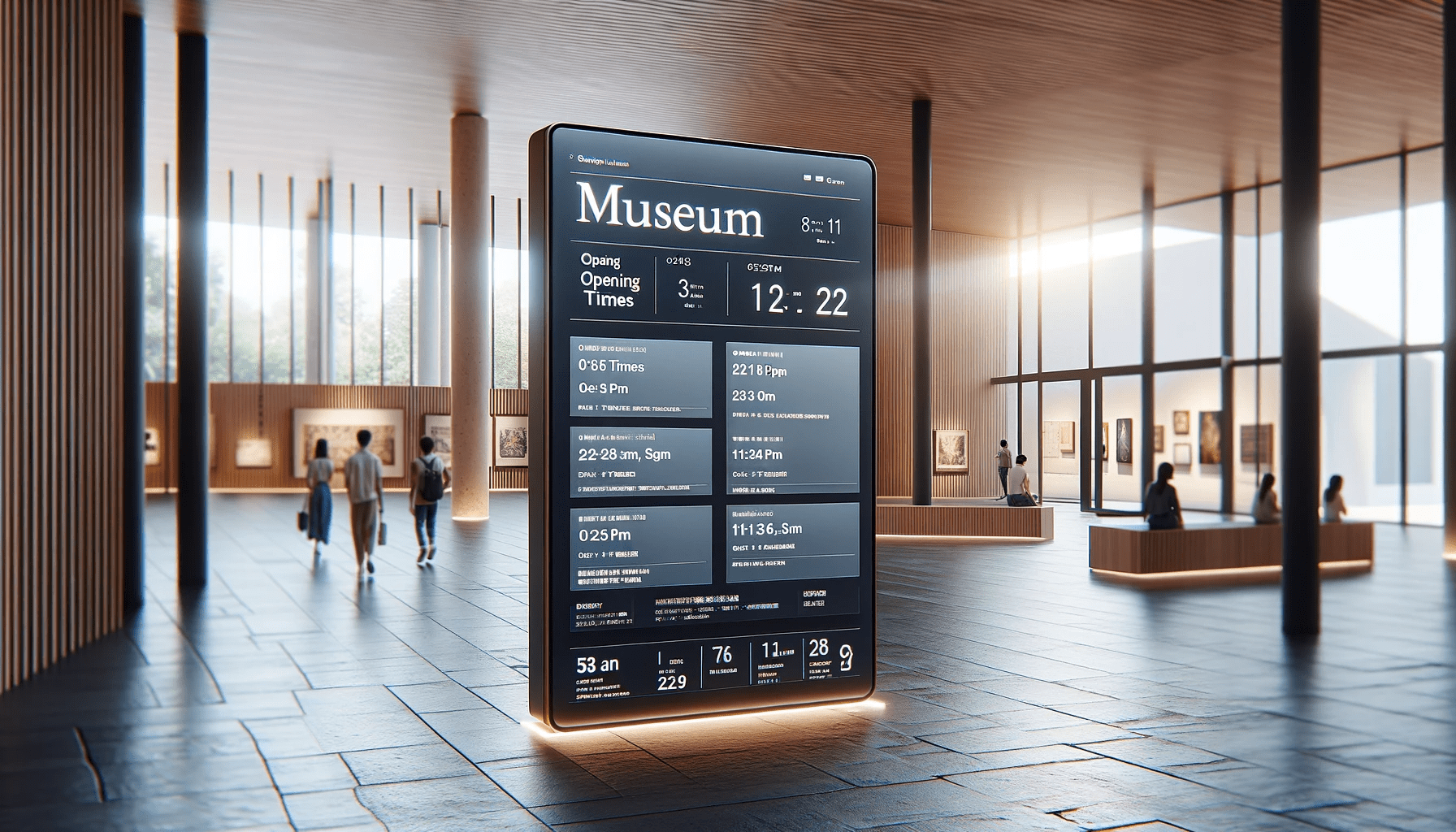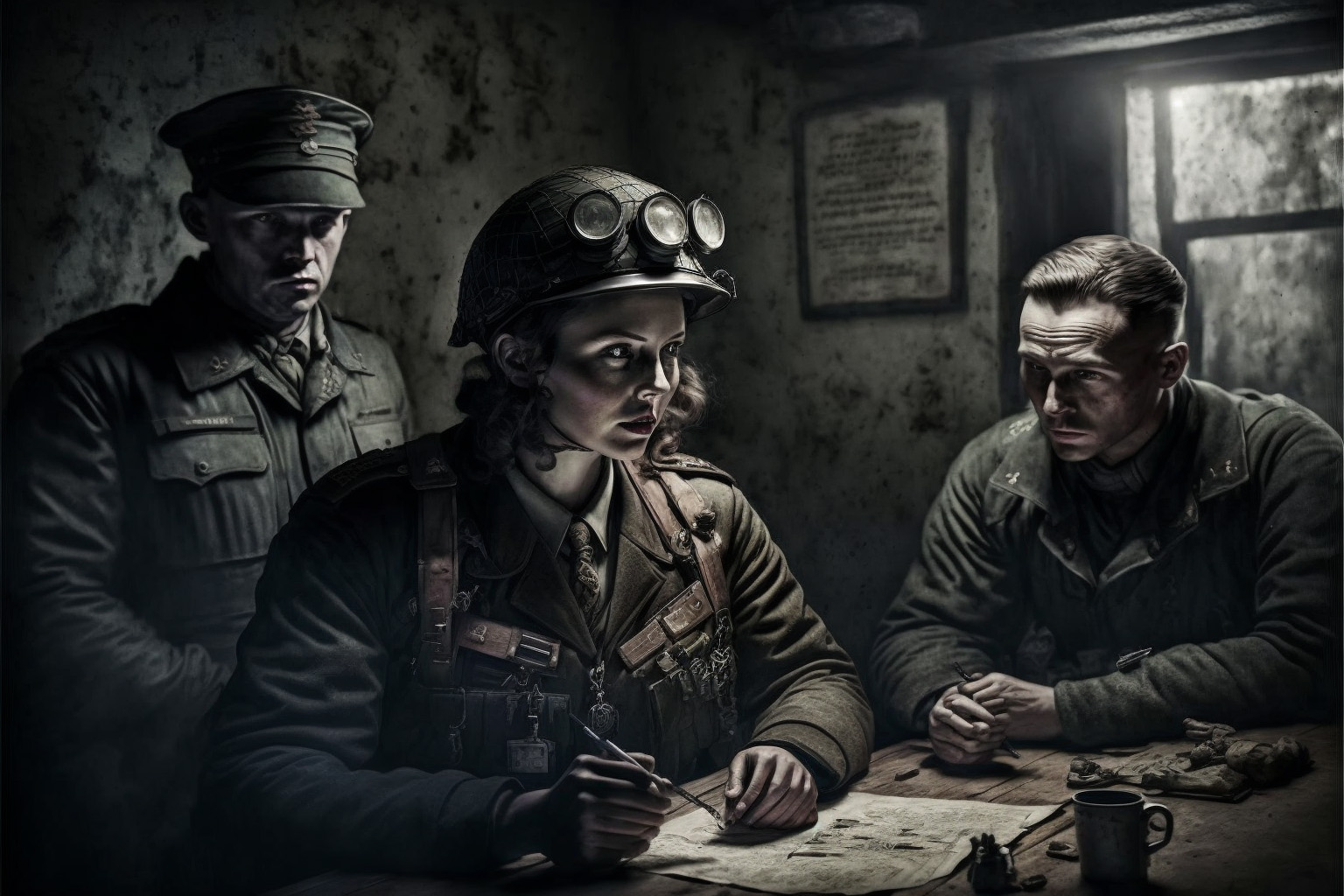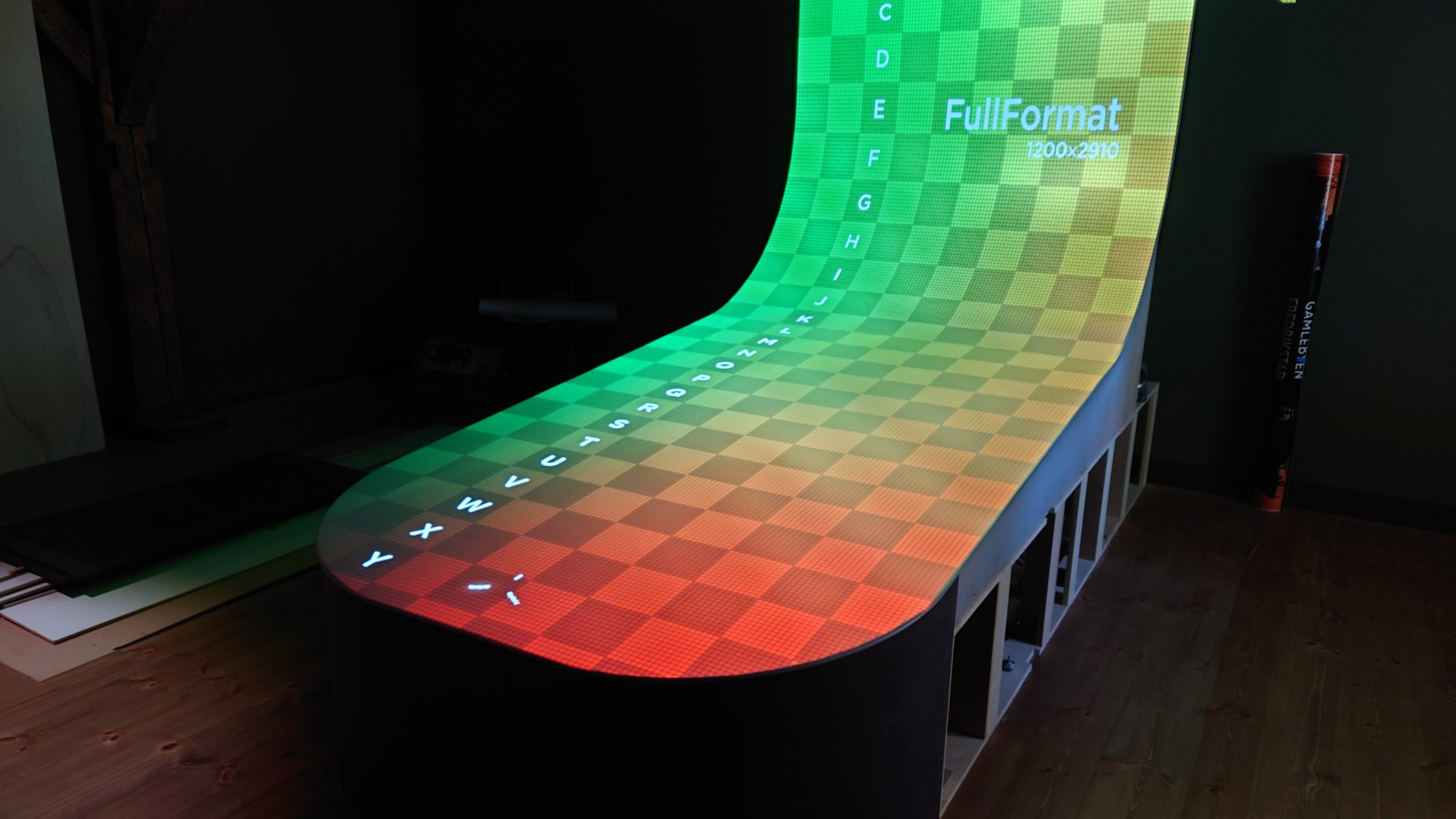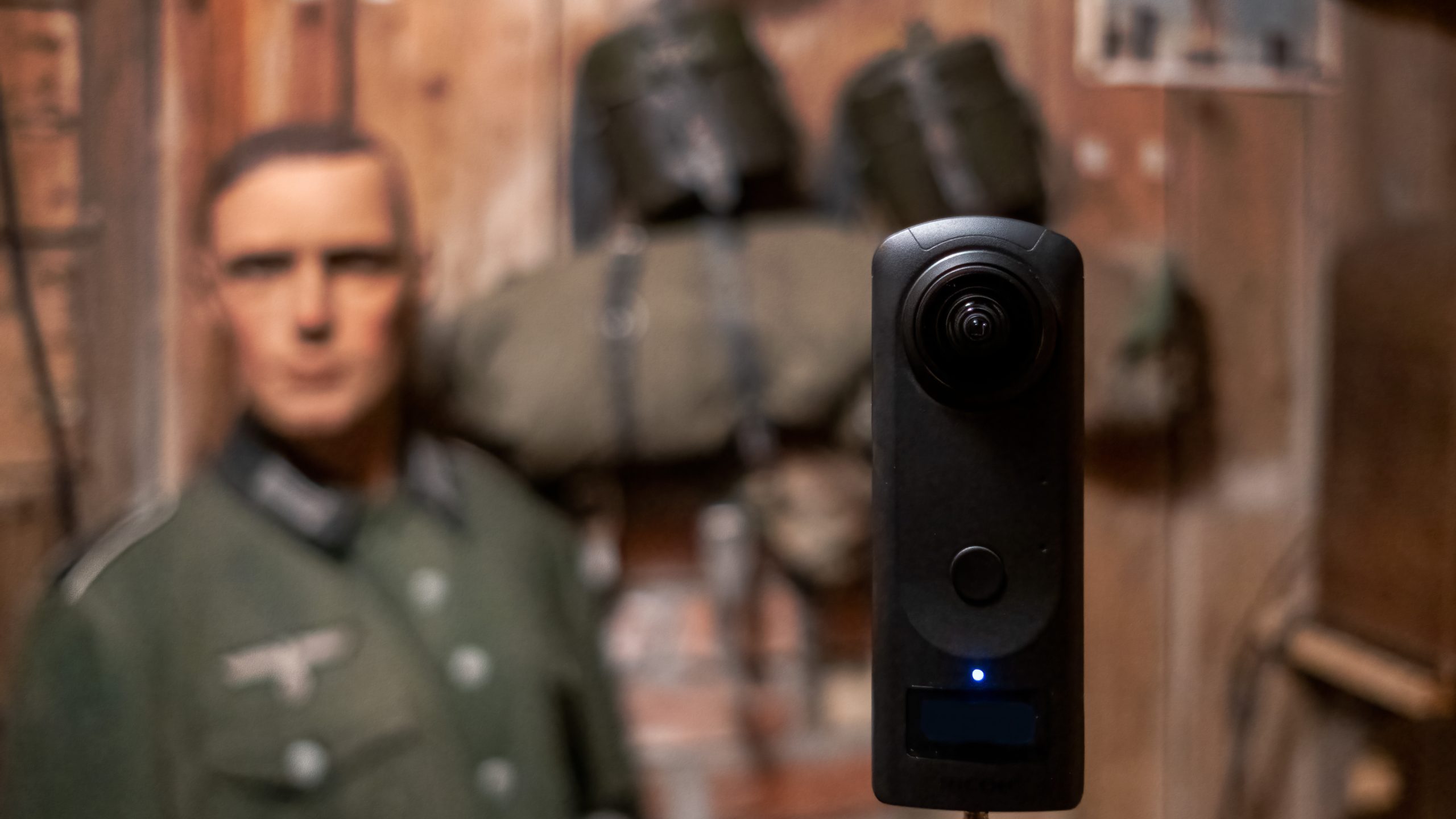"Agent Askeladden" at Fredrikstad Museum: A serious game experience for the World War II exhibition. Solve challenges and learn about the history of the war.

Østfoldmuseene digital signage with 1play.tv & Raspberry Pi
In the lowlands east of the Oslofjord, Østfoldmuseene stands as a beacon of cultural heritage. Our mission is to captivate our community by making history come alive. Amidst the digital era, we faced the challenge of finding a cost-effective yet efficient way to disseminate information about our diverse events and exhibitions spread across various locations.
The challenge of traditional communication
Gone are the days when traditional communication methods ruled supreme. In our fast-paced, digital-centric world, we needed a solution that not only facilitated centralized management but also enabled effective cross-promotion, all while being mindful of budget constraints.
Unveiling the solution
The breakthrough came with an innovative blend of 1play.tv, a versatile digital signage platform, and Raspberry Pi, known for its cost-efficiency. As the Digital Strategist spearheading this initiative, I orchestrated the technology’s integration across our nine museums, transitioning to a more dynamic communication approach seamlessly.
Role of a digital strategist
This project underscored the importance of innovative digital solutions in cultural settings. My role entailed identifying digital needs, selecting appropriate technology, and overseeing its successful deployment, enhancing my expertise in digital strategy and technology integration within cultural experiences.
Centralized content management
Utilizing 1play.tv, we achieved centralized content management, ensuring consistent and timely communication across all museum locations. This system reshaped how we disseminate information, marking a significant leap in operational efficiency.
Cost-effective technology
The Raspberry Pi devices proved to be a game-changer. Not only were they affordable, but they also offered high efficiency, allowing us to allocate more funds to other crucial projects.
Enhancing visitor engagement
Our digital signage strategy, powered by 1play.tv, transformed how we engage visitors. We could now creatively advertise our activities and exhibitions, boosting visitor interaction and encouraging exploration of various museum sites.
Customized content for diverse audiences
We developed tailored playlists to resonate with different audience segments. During operational hours, the focus was on daily activities, while post-closing hours emphasized our ongoing exhibitions.
Shared playlists for cultural unity
A unique shared playlist feature was launched to promote exhibitions across all museums. This initiative fostered a collective cultural experience, strengthening the bond between our museums and the community.
Impact on museum operations
This digital signage project markedly enhanced visitor engagement and streamlined access to information. The Raspberry Pi solution was not just cost-effective but highly efficient, enabling the redirection of resources to other essential areas.
Quantifying the benefits
The deployment of this technology significantly boosted visitor numbers and engagement levels. It stands as a testament to the power of digital transformation in enhancing the museum experience.
Innovative features of digital signage
1play.tv offered advanced features that we leveraged to create an immersive visitor experience. From interactive displays to real-time updates, the platform brought a new dimension to our communication strategy.
Sustainability and cost savings
In the long run, this digital approach promises sustainability and notable cost savings. The low maintenance and operational costs of Raspberry Pi, coupled with the efficiency of 1play.tv, present a financially viable model for museums.
The future of digital signage in museums
Looking ahead, we aim to expand the capabilities of our digital signage, incorporating interactive elements and personalized content, further enriching the visitor experience.
Challenges and learnings
The journey wasn’t without its hurdles. We faced technical and logistical challenges, but these were invaluable learning experiences that shaped our approach and strategy.
Digital innovation on a budget
Our journey with 1play.tv and Raspberry Pi serves as a model for other cultural institutions seeking digital innovation without a hefty price tag. It demonstrates that budget constraints need not be a barrier to technological advancement.
Conclusion
The digital transformation at Østfoldmuseene with 1play.tv and Raspberry Pi is a shining example of how strategic technology use can revolutionize visitor engagement in the cultural sector. This endeavor is a testament to our commitment to innovation and public engagement.
1play.tv and Raspberry Pi significantly enhanced the visitor experience by providing real-time, dynamic content that was both informative and engaging. The digital signage offered a modern and interactive way for visitors to learn about daily activities, special offers, and ongoing exhibitions. This technology made it easier for visitors to plan their museum experience, increasing their engagement and satisfaction.
The main challenges included ensuring seamless integration with the existing infrastructure, managing content updates across multiple locations, and training staff to use the new system. Additionally, ensuring the stability and reliability of the Raspberry Pi devices in a continuous operational environment was crucial.
The project has greatly improved operational efficiency. Centralized content management means that updates and announcements can be made quickly and simultaneously across all locations, reducing the need for manual updates. It has also streamlined communication, making it more consistent and effective, thereby reducing the workload on staff.
Absolutely. The strategy employed by Østfoldmuseene is scalable and can be adapted to fit different sizes and types of museums. The key is to assess the specific needs and resources of the museum and then tailor the solution accordingly. The combination of 1play.tv and Raspberry Pi offers a flexible and cost-effective model that can be replicated in other cultural settings.
Future enhancements include integrating interactive elements, such as touch-screen capabilities and QR codes that link to additional content. There is also a plan to introduce personalized content delivery based on visitor preferences and history. Additionally, we are exploring options to incorporate AI-driven analytics for better understanding visitor engagement and improving content strategy.
The Raspberry Pi played a crucial role in the project’s cost-effectiveness due to its affordability and flexibility. As a low-cost computing solution, it allowed for the deployment of multiple digital signage displays without a significant investment in hardware. Moreover, its compact size and low power consumption reduced operational costs, making it an ideal choice for a budget-conscious project like ours.



